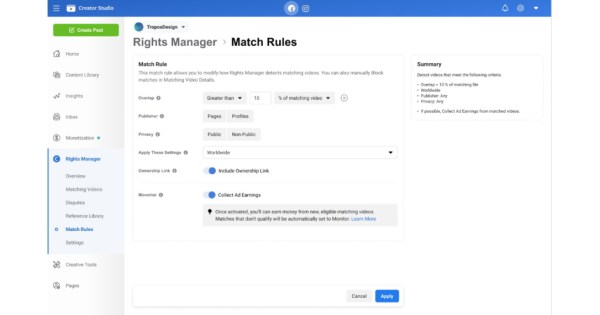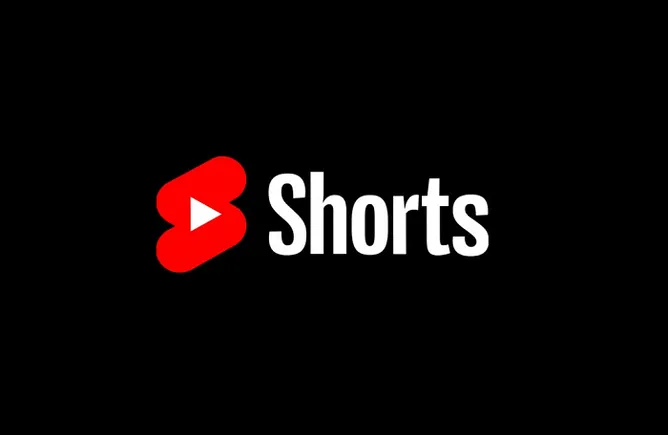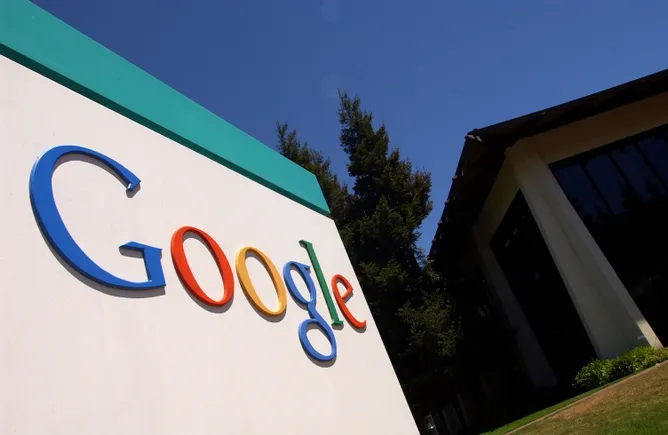As an entrepreneur or business owner, you’d want your brand to reach a wider audience and meet its sales targets. Achieving these goals requires a lot of time, effort, and resources. Fortunately, there are several marketing tactics you can do not only to increase awareness for your brand but also to drive more sales for your business.
Today, one of the most effective marketing strategies businesses implement is affiliate marketing. Since the 2000s, affiliate marketing has steadily gained traction, as more businesses use digital marketing to get their brand closer to consumers. Also, the rise of influencer marketing, where business owners collaborate with bloggers and social media influencers to advertise their products and services, has made affiliate marketing an integral part of marketing plans. Additionally, affiliate marketing is often facilitated through Influencer marketing platforms.
In this article, we’re listing the top affiliate marketing statistics for 2023 that every advertiser and affiliate marketer should know.
Top Affiliate Marketing Statistics for 2023:
1. The number of online searches for “affiliate marketing” has been constantly increasing since 2016.
As per Google Trends, the worldwide search interest for “affiliate marketing” has not only been growing but accelerating since 2020. It had reached a peak in August 2022 but didn’t stop there. Instead, interest kept climbing, hitting all-time high scores in 2023. The growth pace mirrors the rising importance of digital income streams in recent years. Key moments include a spike to a score of 57 in May 2021, an impressive 73 during the last week of December 2022, and an unprecedented score of 100 in the first week of 2023. The trend is clear – affiliate marketing has cemented its place as a prominent income-generating strategy in our digital economy.
2. Affiliate marketing is a multibillion-dollar global industry.
Affiliate marketing continues its growth trajectory, solidifying its reputation as a lucrative global industry. The Performance Marketing Association’s report highlighted a remarkable 47% industry growth from 2018 to the end of 2021, demonstrating how integral it has become for many retailers.
Future projections indicate a continuation of this upward trend. By the end ot 2023, global affiliate marketing spending is set to escalate to $14.3 billion, and this figure is anticipated to climb further to $15.7 billion by 2024. This rapid growth underscores the increasing reliance on affiliate marketing by businesses worldwide as they connect with consumers in the expanding eCommerce landscape.
3. Forecasts suggest that affiliate marketing spend will continue to increase.
Statista reports that the projected expenditure for affiliate marketing in the United States alone was expected to reach $8.2 billion in 2022, up from $7.4 billion in 2021. From only $2.5 billion in 2012, the spending for affiliate marketing has continued to increase year by year, which suggests that more businesses are incorporating affiliate marketing in their campaigns. The upward trend is projected to surge further with affiliate marketing spending anticipated to reach an impressive $13 billion by the end of 2023.
Source: statista.com
Affiliate marketing spend not only continues to increase in the U.S. Other countries are also allocating a large portion of their marketing budget to affiliate marketing. For example, businesses in Japan spent more than 349 billion Japanese yen on affiliate marketing in 2021. By 2025, the affiliate marketing expenditure could go beyond 514 billion yen. Meanwhile, affiliate marketing spend in the United Kingdom reached about £793 million in 2021, up from £738 million in 2020.
These numbers not only show that affiliate marketing is recognized as an effective marketing tool globally but also continues to thrive each year, with big players in the online marketplace—like the U.S., the U.K., and Japan—allocating a chunk of their marketing budget to it.
4. Investment in Affiliate Marketing Companies Soars
2023 saw an uptick in investment in affiliate marketing companies, with more than $1.5 billion raised in all-time funding across 232 rounds. This marks a 15.38% increase compared to the previous year, indicating the growing confidence of investors in the potential of the affiliate marketing industry.
5. Affiliate marketing drives 15-30% of eCommerce sales
Affiliate marketing generates about to 30% of the revenues from digital marketing channels. It has caught up with the likes of email marketing, paid search, and social media marketing as one of the most effective digital advertising techniques. 16% of online orders in the United States come through affiliate marketing. (DemandSage).
Through brand affiliates, brands can reach out to consumers without being too intrusive. Since brand affiliates have followers who trust their content, it can be easier for them to influence or convince people to buy products from brands they endorse.
6. The majority of publishers use affiliate marketing to generate more income.
Affiliate publishers are content creators who specialize in publishing materials through websites, mobile apps, and other digital channels.
Over 84% of online content publishers join affiliate marketing. A whopping 94% of publishers join 2 or more affiliate programs, while 39% and 20% of publishers use 3 or more and 5 affiliate marketing programs, respectively.
Publishers can work directly with brands or join an affiliate network like Amazon Associates, AWIN, or eBay Partner Network (EPN). Affiliate networks not just connect brands and publishers, but also streamline processes such as account management, commission payouts, and reporting.
7. Awin tops one list of affiliate networks with the highest number of publisher links; however, Amazon Associates has nearly 50% share, according to another source
In research conducted by Publisher Discovery, Awin has 30% of the worldwide publisher links, followed by C.J. Affiliates (15.8%) and Rakuten (7.4%). Awin’s large market share is primarily due to its acquisition of ShareASale. However, the data for this list doesn’t include Amazon Associates publisher links and affiliate activity from in-app or social media pages.
In the same research, but only taking into account active publishers, C.J. Affiliate emerges on top with 15.7% of active publisher links. Awin takes the second spot with a 10.2% market share, while Rakuten ranks third with 5.0%.
However, results from research undertaken by Datanyze, which includes Amazon Associates, show Amazon Associates ranking on the top with almost half of the market share at 47.85%. Coming in at the second spot is C.J. Affiliate’s 7.21% market share, followed by Rakuten, which has a 7.17% market share of publisher links, and ShareASale, 6.72%. By this measure, AWIN only comes in 5th position, with a 5.65% market share; however, when you recognize Awin now owns ShareASale, their combined share takes second place, only behind Amazon.
8. Online Affiliate Marketing Managers can earn an average of nearly $62,000 annually from affiliate marketing.
According to PayScale, the average base salary for an Online Affiliate Marketing Manager is $61,748, not including benefits, bonuses, profit sharing, or commissions.
Top-end affiliate marketers earn a combination of up to $88,000 p.a. as a base salary, $13,000 p.a. as a bonus, and $22,000 for commission. Meanwhile, low-tier affiliate marketing managers typically earn $42,000 annually.
PayScale has observed that entry-level pay for online affiliate marketing managers has dropped 21% recently, with early career salaries 8% lower. However, mid and late-career Online Affiliate Marketing Managers are now seeing pay raises of up to 19%.
Many publishers say they use affiliate marketing because it allows earning money with only a little effort. They only need to sign up for an affiliate program and then create and upload content. When web users click or make a purchase after clicking the publisher link, they get a commission. This means affiliate marketers can earn while doing other activities like taking a vacation, watching a movie, or even sleeping.
9. SaaS-based products pay 20-70% commission
One of the results we found in a survey conducted for our Affiliate Marketing Benchmark Report was that SaaS products could be highly lucrative for affiliate marketers/publishers, paying up to 70% commission. However, commission rates varied greatly, and some were much nearer 20%. If you are a content creator/publisher wanting to participate in affiliate marketing, it is vital you first do your research to see that you are promoting products that offer a reasonable return for your efforts.
10. CPA is the predominant way to reward publishers within affiliate programs
iab Australia research has found that CPA (Cost Per Action) remains the predominant way to reward publishers within affiliate programs in 2023, although it is common to use a combination of models. 74% of advertisers/agencies and 83% of publishers say they use the CPA commission model. The next most popular methods are Tenancy Fees (fees for placements) – 43% advertisers/agencies, 48% publishers, and CPC (Cost Per Click) – 33% advertisers/agencies, 35% publishers.
11. 7 types of publishers typically participate in affiliate marketing
Active Revenue identified seven types of publishers typically found in affiliate marketing:
Blogs and content platforms
Cashback and loyalty sites
Comparison pages
Social media publishers
Email marketers
Retargeting and remarketing experts
Shopping directories and voucher sites
Publishers act as the connection point between advertisers and their audiences and generally keep on top of recent consumer trends.
12. 31% of publishers consider affiliate marketing to be one of their top 3 sources of revenue
eMarketer surveyed publishers about their main sources of online revenue. Unsurprisingly, eCommerce topped this list, with 36% of publishers naming it their top online revenue source and 62% placing it in the top three. Second place went to Subscriptions and memberships (29% top source, 58% in the top three). Affiliate marketing, however, was also popular, and although only 9% of respondents named it their highest revenue source, 31% placed it in their top three.
As eMarketer observed, however, there is considerable overlap between these top sources. Many publishers would consider their affiliate revenue to be part of their eCommerce earnings and may not clearly distinguish between the categories.
13. More than 65% of publishers use social media to reach out to potential customers.
There are over 2 billion people who have at least one Facebook, YouTube, or Instagram account. Twitter also has more than 300 million active users. With the numbers this significant, there’s no wonder affiliate marketers use social media to connect to niche audiences.
14. The number of male publishers is higher than female affiliate marketers.
However, the difference is just about 12%. There are about 54% male publishers and 43% female affiliate marketers. More female content creators and influencers are learning the trade, which can reduce the gap in the coming years.
15. More Than 75% of Affiliate Marketing Managers Are Female
While there may be more male publishers than female publishers, the same doesn’t apply to those employed as online affiliate marketing managers. PayScale broke down the gender balance of their respondents. They found that 75.8% of the Affiliate Marketing Managers surveyed were female, compared to just 23.2% male.
16. Publishers whose age range is between 35 and 44 comprise the majority of the total affiliate marketer population.
People within the 35 to 44 age group make up 32% of the total affiliate marketing industry. A close second are publishers within the 25 to 34 age group at 28%. Other affiliate marketer age groups include 45 to 54 (22%) and 55 to 64 (9%). On the lower end, 5% of marketers are 18 to 24, while 3% are above 65 years old. Although this information from Statista dates back to a 2016 survey, there is nothing to suggest there has been a significant demographic change since then.
17. The top affiliate networks have over 150,000 affiliates.
Startup brands and small businesses that don’t have a huge marketing budget can use affiliate marketing to get their products and services closer to consumers. Affiliate networks have hundreds of thousands of brand affiliates that cater to a specific audience.
Likewise, joining affiliate networks can benefit bloggers and influencers who are looking to monetize website traffic and earn high commissions from advertising the products or services of a partner merchant. Below are some affiliate networks with the largest number of partner merchants and publishers.
AWIN has over 25,000 advertisers and 270,000 publishers
ShareASale also says it has 25,000 and 270,000 publishers, however as Digital Window purchased ShareASale, and was then in turn purchased by AWIN in 2017, AWIN and ShareASale probably quote the same (combined) user numbers.
CJ Affiliate has 3,800 global brands and 167,000 publishers
Amazon Associates has over 900,000 members globally (creating 189,159 affiliate websites)
18. Amazon Associates accounts for more than ¼ of websites using Affiliate Programs technologies
Another way to look at the comparative size of the various affiliate marketing networks is to examine the relative percentage of websites created using Affiliate Programs technologies.
According to BuiltWith, the most common affiliate marketing-powered websites are:
Amazon Associates (26%)
AWIN (13%)
Affiliate Window (7%)
Commission Junction (i.e., CJ Affiliate) (6%)
Impact (4%)
Link Share (4%)
ShareASale (4%)
Rakuten Affiliate (3%)
BuiltWith found there to be 52,190 affiliate sites within the top 1 million websites overall, of which 9,159 are in the top 100,000 and 1,623 in the top 10,000 sites by traffic.
19. Affiliate marketers consider product relevance as a crucial factor in choosing an affiliate program.
Many affiliate marketers carefully consider the nature of products before committing to promoting them. About 18% of marketers say that they look at the type of product before choosing an affiliate marketing program. If the products fit their niche, it’s easier to create valuable and convincing content about them.
Other factors that affiliate marketers check out include the commission rate and the reputation of both the affiliate marketer and its partner merchants.
20. Web hosting is one of the most popular and lucrative forms of affiliate marketing programs.
New bloggers, influencers, and brand owners would need a host to set up their websites. Web hosting affiliate programs are popular among publishers because, for a minimal fee, they can earn per referral.
Bluehost paid over $5 million in commission in one year and offers one of the highest-paying web hosting affiliate programs. Publishers who promote Bluehost’s web hosting service and other products can earn at least $65 to $130 from a sale.
21. Exploring the Most Profitable Affiliate Niches
Gone are the days when the fashion and wellness industries dominated the affiliate marketing landscape. Today’s top niches offer a unique mix of low competition, high traffic, and significant income potential. Here’s a glimpse into some of the most lucrative affiliate niches in the current market:
Home Goods: Specifically, vacuum cleaners have emerged as a strong contender in this niche.
Travel: Hotels with specific amenities such as jacuzzis have found their niche in the vast travel industry.
Parenting: The focus here is on travel car seats, catering to the needs of families on the go.
Sports: Golf equipment has carved its niche, resonating with the sport’s passionate and affluent fan base.
Tech Gadgets: Earbuds and headphones remain a popular niche given the constant demand for updated models with improved features.
Sustainability: Zero waste products have found their place in the market, resonating with eco-conscious consumers.
Automotive: Car audio equipment has emerged as a significant niche in the automotive world.
Music: Guitars form a robust niche among music lovers and musicians.
Hobbies: Woodworking stands out as a profitable sub-niche within the broad category of hobbies.
Gardening: DIY tiny space gardening resonates with urban dwellers seeking to greenify their small living spaces.
While the Toy industry led U.S. affiliate revenue growth in the previous year, the current landscape is much more diverse. It offers a wide range of opportunities spread across different sectors for savvy affiliate marketers.
22. Cost per Action or Pay Per Lead is the most commonly used payment model.
In the Cost per Action (CPA) model, the merchant or advertiser pays the publisher a specific amount for every action that a user makes. Actions may vary and may include email sign-up, event registration, or buying a subscription.
Cost per Sale is another payment model commonly used in affiliate marketing where the publisher receives either a fixed amount or a percentage of the cost of the item sold. Typically, commissions range from a minimum of $3 to $200 or 1% to as high as 60% per sale, depending on the affiliate program and niche. However, there are affiliate marketers that earn a thousand dollars from a sale.
23. Mobile-ready websites are at an advantage.
More than half of the online population have bought something online with their mobile device. As people can purchase products using their smartphone, tablet, or laptop, publishers and brand affiliates must have their websites optimized for mobile devices. Mobile-ready websites allow shoppers to view web pages with ease, which improves the overall customer buying experience.
24. Artificial Intelligence and voice search tech trends to watch out for.
Based on statistics, over 72% of mobile device users use voice assistants daily. An impressive number of about 95 million units form the installed base of smart speakers in the United States alone. The popularity of smart speakers extends beyond the U.S. borders. In 2022, close to 40 percent of people in the United Kingdom owned a smart speaker, utilizing it for similar tasks as their U.S. counterparts.
Apps like Siri and Alexa were considered a novelty when they were first introduced. However, as smart homes emerge, the use of voice-assisted technology has also increased. Now, besides shopping or searching for information, digital assistants are useful in performing daily tasks such as turning appliances on or off, playing music and videos, checking weather updates, and setting up a person’s daily schedule.
Frequently Asked Questions
What is the success rate of affiliate marketing?
The average affiliate conversion rate normally hovers around 1%. This percentage is an estimate because many affiliate marketers will keep their affiliate conversion rate to themselves.
How big is the affiliate marketing industry?
Affiliate marketing is a multi-billion-dollar industry. Spending in the U.S. is predicted to reach more than $13 billion by the end of 2023.
What is the average affiliate marketing percentage?
Most affiliate commissions will be percentage commissions, which is the most common way to get paid in affiliate programs. Commission can range from 5% to 30%. If you only sell a few specific products, consider a fixed-amount commission.
Is affiliate marketing worth it in 2023?
Affiliate marketing is hard work, and it is only worth it if you can match your product to your audience. It’s important to pick products that match your niche and pick products that you are passionate about. It comes down to targeting the product to your audience.
Can affiliate marketing make you rich?
Affiliate marketing can make you rich, but it won’t happen overnight, and it’s not a fast process. The top tier of affiliate marketers, known as “super affiliates,” often spend years building an audience to earn six-figure salaries.
About the Author
Writer
Geri Mileva, an experienced IP network engineer and distinguished writer at Influencer Marketing Hub, specializes in the realms of the Creator Economy, AI, blockchain, and the Metaverse. Her articles, featured in The Huffington Post, Ravishly, and various other respected newspapers and magazines, offer in-depth analysis and insights into these cutting-edge technology domains. Geri’s technological background enriches her writing, providing a unique perspective that bridges complex technical concepts with accessible, engaging content for diverse audiences.












